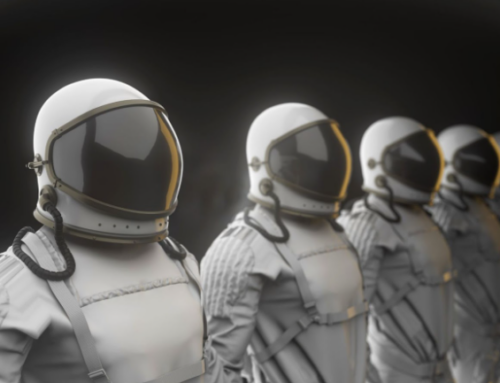As humans continue to venture outside our atmosphere, the advanced strategies and technology of space travel are slowly becoming part of the fabric of everyday life on Earth. From advanced AI and robotics to memory foam mattresses, the science that facilitates intergalactic exploration is also improving life beneath the ozone layer.
Fortunately for us, the science that goes into developing the likes of a Mars Rover is made readily available by NASA. Through its Commercial Technology Transfer Network, NASA shares scientific and technological information that allows companies and individuals to create space-inspired spinoffs based on available technology. Since 1976, the market has seen more than 2,000 NASA technology spinoffs, yielding significant economic growth, inspiring innovation and making our lives a little easier and more enjoyable.
We’ve already touched on some of the ways space exploration benefits our humble life here on Terra Firma, so let’s take a look at the more specific products, technologies and ideas that make interstellar science a major part of our human existence.
1. Baby Formula
As NASA began exploring different ways to feed astronauts while in orbit, extensive research went into finding crops that could be effectively grown in space. A specific strain of algae was discovered to produce the same nutrients found in human breast milk. As a result, the findings were adopted by private companies to produce baby formula, giving some of us a taste of space technology within our first few hours earthside.
2. Memory-Metal Alloys
From helicopter blades to eyeglass rims and golf clubs, TYCOR is a fiber-reinforced composite that resumes its original shape after being deformed, such as by strong winds or the tiny-but-mighty force of that golf ball resting a powerful backswing.
3. Medical Imaging
Next time you’re getting an x-ray or MRI, consider that your clear, precise imaging is made possible thanks to NASA. The charge-coupled device that allows for those clear images is a chip that turns light into electric impulses, developed by NASA in the 1970s. The same technology also powers most modern video recordings and the camera on your phone.
4. Infrared Technology
While NASA initially used it to detect the birth of stars, infrared technology has been scaled down (quite significantly). It is now widely used in everyday household items like ear thermometers.
5. Diabetes Management
Early implantable insulin pump technology came from research and development done around two of the Mars Viking missions in the 1970s. The Programmable Implantable Medication System was a tiny, micro-miniaturized fluid control system that has now evolved into the life-saving insulin pumps many people with diabetes rely on daily.
6. Memory Foam
Possibly one of NASA’s most notable contributions to modern comfort, memory foam was initially designed to improve the ease of seating on board shuttles and other spacecraft. Memory foam softens in response to body heat, conforming to that body and maintaining its shape. Today, memory foam is used in hospitals, football helmets, and cozy mattresses, among other applications.
7. Eye Protection
It shouldn’t come as a surprise that the technology that protects our eyes from our solar system’s largest star was developed in the name of space exploration. The tinted, UV-blocking lenses were designed in the 1980s to protect astronauts’ eyes from harmful solar rays. NASA-specific shades, called Eagle Eyes (because the idea was based on the eye structure of birds of prey), are available commercially.
8. Water Purification
At least 2 billion people on Earth lack access to safely managed drinking water, but space technology is working to change that. The Water Recovery System (WRS) component of NASA’s Environmental Control and Life Support System (ECLSS) is a cutting-edge system designed to recycle air aboard a space station. In 2006, the technology was adopted by Water Security Corporation (WSC), which has since installed water purifying systems all over the world and developed a first response device created to facilitate clean drinking water in the wake of natural disasters, refugee camps, civil emergencies, or remote locations.
9. Cleaner Air
Much like the Water Recovery System (WRS) recycles water into a usable form, NASA’s Oxygen Generation System (OGS) produces breathable oxygen for space-bound astronauts. While this process could hardly be used to generate enough oxygen to sustain an entire planet, it gives us some insight into how we can produce cleaner breathing space in the light of climate change and air pollution.
Air purifiers are used worldwide in grocery stores, hospitals and private homes (especially those with young children or individuals with respiratory or allergic issues) to improve indoor air quality. On a larger scale, this improvement has helped populations avoid certain illnesses, like lung disease, and provided an improved quality of life.
10. Improved Physical Fitness (at Home)
The mission to reduce muscle atrophy and bone loss in astronauts had NASA stumped up until the late nineties. Around that time, inventor Paul Francis developed an idea for a weight-lifting system that didn’t use weights. Instead, he used an enhanced elastomer compound fashioned into torsional spiral-shaped springs that would produce resistance and tension without any gravitational influence. The inventor soon collaborated with NASA to create what would quickly become the prototype for a well-known home gym, the Bowflex (and lots of other home fitness systems).
It’s fun and easy to look at the gadgets and devices we associate with space travel and think of space technology as a means of amusement and comfort. Wireless headphones, athletic shoes and freeze-dried ice cream all have an element of luxury to them but take away from the major impact space exploration has had on our lives.
As we continue toward an uncertain future, our health, survival and perhaps. life as we know it depends on the innovation that continues to unfold on behalf of space exploration. We may not have found life outside of our atmosphere (yet), but our endeavor to explore the great expanse beyond it has led to a better life for all who call this tremendous floating rock our home.






